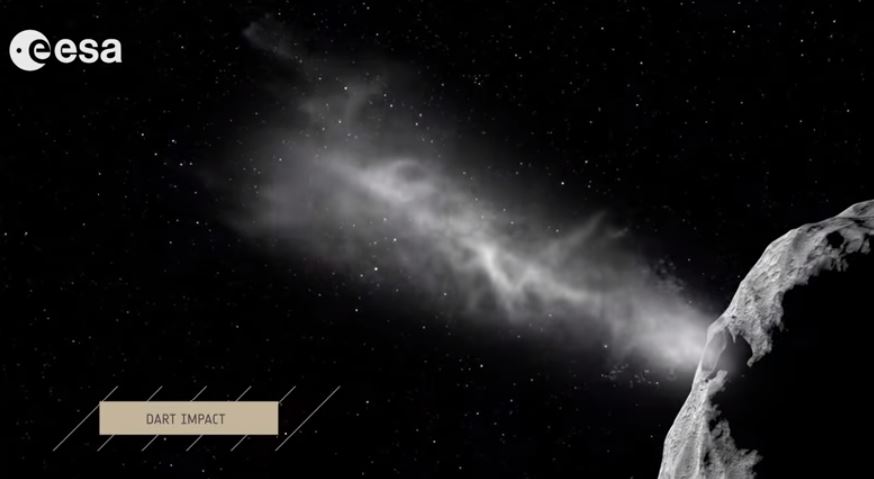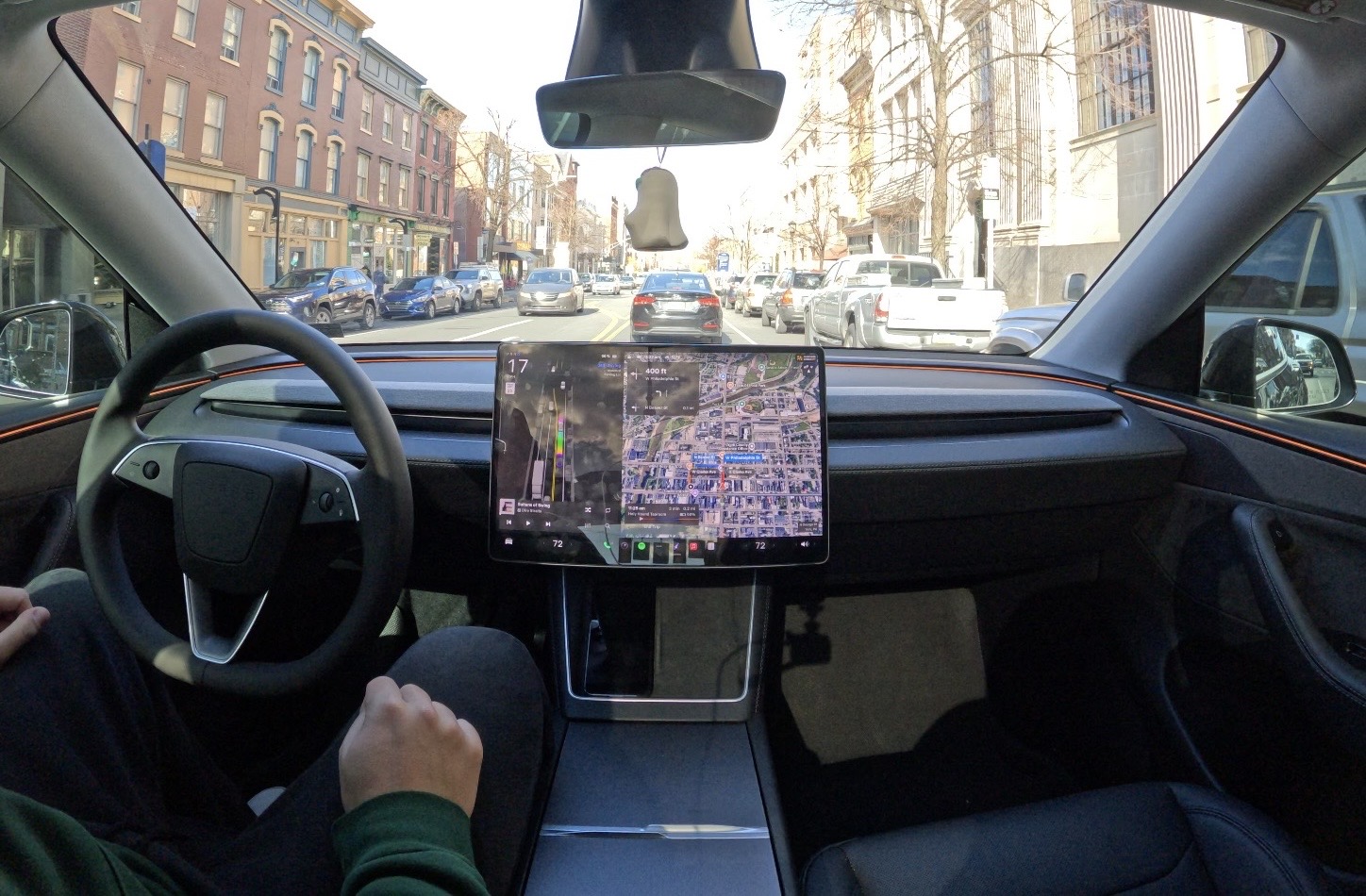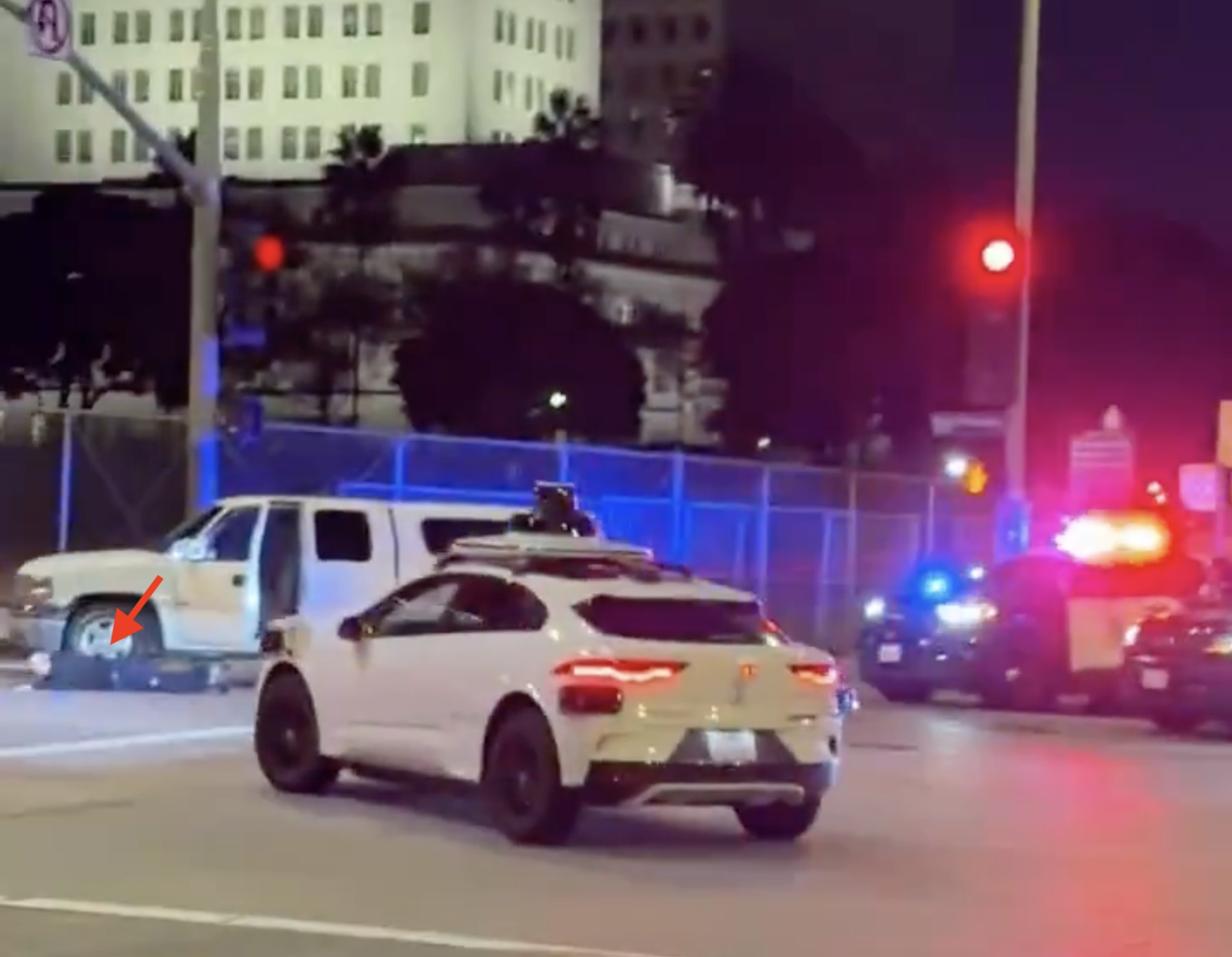

News
NASA is crashing a satellite into an asteroid to gather data about asteroid deflection
The threat of asteroids crashing into Earth isn’t a new concern. We’ve been warned about it by science fiction authors and Hollywood alike, and any kid that’s ever paid attention to dinosaurs in school knows there are bad outcomes when life and chunks of space rock meet up. The space agencies of Europe and the United States are not blind to the threat, thankfully, and they have a multi-part satellite mission in the works directed to gathering real data on how to redirect an asteroid with bad intentions for our planet, i.e., is on a collision course. Specifically, they’re planning on crashing one satellite into an asteroid and studying the effect with another satellite run by the European Space Agency (ESA).
NASA’s part of the mission is called the Double Asteroid Redirection Test (DART), and it will serve as the first demonstration of changing asteroid motion in space. The launch window begins in late December 2020, most likely on track for June 2021, for arrival at its targeted asteroid, Didymos, in early October 2022. Didymos is Greek for “twin”, the name being chosen because it’s a binary system with two bodies: Didymos the asteroid, about a half mile across, and Didymoon the moonlet, about 530 feet across, acting as a moonlet. The two currently have a Sun-centric orbit and will have a distant approach to Earth around the same time as DART’s launch window and then again in 2024.
After reaching the asteroid, DART will enter orbit around Didymoon, and crash into it at a speed of about 4 mi/s (nine times faster than a bullet) to change its speed by a fraction of one percent, an amount measurable by Earth-based telescopes for easy study. Unsurprisingly, the preferred description is “kinetic impact technique” rather than “crash” – maybe even “impact” or “strike”, if we’re avoiding terms that sound random or accidental. The mission is being led by the Johns Hopkins Applied Physics Laboratory (JHU/APL) and managed by the Planetary Missions Program Office at Marshall Space Flight Center in Alabama for NASA’s Planetary Defense Coordination Office.

NASA’s DART mission is one of two parts of an overall mission dubbed AIDA (Asteroid Impact & Deflection Assessment). Joining the agency’s Earth-protection venture is the ESA with its Hera spacecraft, named after the Greek goddess of marriage, a probe that will follow up DART’s mission with a detailed survey of the asteroid’s response to the impact. Collected data will help formulate planetary defense plans by providing detailed analysis from DART’s real-time asteroid deflection experiment. Its launch is scheduled for 2023.
Just this month, another part was added to Hera’s mission: CubeSats. This class of tiny satellites is about the size of a briefcase, and they recently made their deep space debut during NASA’s Mars InSight landing. During that mission, twin CubeSats collectively named MarCO followed along on the journey to Mars behind InSight, eventually relaying data during the landing event back to NASA’s Mission Control along with a photo of the red planet. ESA’s CubeSats, named APEX (Asteroid Prospection Explorer) and Juventas, will travel inside Hera, gather data on Didymos and its moonlet, and then both will land on their respective rocks and provide imaging from the surface.

Just to recap: Tiny satellites in a class that students and startups can and have developed and launched will travel into deep space and land on asteroids. This is big news for the democratization of space travel. As emphasized by Paolo Martino, Hera’s lead engineer in ESA’s article announcing the CubeSat mission, “The idea of building CubeSats for deep space is relatively new, but was recently validated by NASA’s InSight landing on Mars last November.”
Using kinetic energy – pure ram/crash force – isn’t the only option NASA is looking at for defending Earth from incoming asteroids. A “gravity tractor” concept would orbit a craft in a way that would change the trajectory due to gravitational tugging. Similar to how our moon has an impact on our tides or the Earth makes the Sun wobble ever so slightly, a satellite orbiting an asteroid would give pushes and pulls to set its course elsewhere.
Unfortunately, a gravity tractor likely wouldn’t be very effective for asteroids large enough to seriously threaten our planet. Also, the techniques for achieving it would require decades to develop and test in space. Laser ablation, or using spacecraft lasers to vaporize asteroid rock to change an asteroid’s course, is another technique NASA has considered, but it might be just as feasible or cost-effective to simply launch projectiles to achieve the same purpose.
Watch the below video for a visual overview of the DART and HERA missions:

Elon Musk
Tesla Optimus shows off its newest capability as progress accelerates

Tesla Optimus showed off its newest capability as progress on the project continues to accelerate toward an ultimate goal of mass production in the coming years.
Tesla is still developing Optimus and preparing for the first stages of mass production, where units would be sold and shipped to customers. CEO Elon Musk has always marketed the humanoid robot as the biggest product in history, even outside of Tesla, but of all time.
He believes it will eliminate the need to manually perform monotonous tasks, like cleaning, mowing the lawn, and folding laundry.
However, lately, Musk has revealed even bigger plans for Optimus, including the ability to relieve humans of work entirely within the next 20 years.
JUST IN: Elon Musk says working will be ‘optional’ in less than 20 years because of AI and robotics. pic.twitter.com/l3S5kl5HBB
— Watcher.Guru (@WatcherGuru) November 30, 2025
Development at Tesla’s Artificial Intelligence and Robotics teams has progressed, and a new video was shown of the robot taking a light jog with what appeared to be some pretty natural form:
Just set a new PR in the lab pic.twitter.com/8kJ2om7uV7
— Tesla Optimus (@Tesla_Optimus) December 2, 2025
Optimus has also made several public appearances lately, including one at the Neural Information Processing Systems, or NeurIPS Conference. Some spectators shared videos of Optimus’s charging rig, as well as its movements and capabilities, most interestingly, the hand:
You have to hand it to Elon 🤟 pic.twitter.com/fZKDlmGAbe
— Ric Burton · NeurIPS 2025 (@_ricburton) December 2, 2025
The hand, forearm, and fingers have been one of the most evident challenges for Tesla in recent times, especially as it continues to work on its 3rd Generation iteration of Optimus.
Musk said during the Q3 Earnings Call:
“I don’t want to downplay the difficulty, but it’s an incredibly difficult thing, especially to create a hand that is as dexterous and capable as the human hand, which is incredible. The human hand is an incredible thing. The more you study the human hand, the more incredible you realize it is, and why you need four fingers and a thumb, why the fingers have certain degrees of freedom, why the various muscles are of different strengths, and fingers are of different lengths. It turns out that those are all there for a reason.”
The interesting part of the Optimus program so far is the fact that Tesla has made a lot of progress with other portions of the project, like movement, for example, which appears to have come a long way.
However, without a functional hand and fingers, Optimus could be rendered relatively useless, so it is evident that it has to figure this crucial part out first.
Elon Musk
Elon Musk and Tesla try to save legacy automakers from Déjà vu

Elon Musk said in late November that he’s “tried to warn” legacy automakers and “even offered to license Tesla Full Self-Driving, but they don’t want it,” expressing frustration with companies that refuse to adopt the company’s suite, which will eventually be autonomous.
Tesla has long established itself as the leader in self-driving technology, especially in the United States. Although there are formidable competitors, Tesla’s FSD suite is the most robust and is not limited to certain areas or roadways. It operates anywhere and everywhere.
The company’s current position as the leader in self-driving tech is being ignored by legacy automakers, a parallel to what Tesla’s position was with EV development over a decade ago, which was also ignored by competitors.
The reluctance mirrors how legacy automakers initially dismissed EVs, only to scramble in catch-up mode years later–a pattern that highlights their historical underestimation of disruptive innovations from Tesla.
Elon Musk’s Self-Driving Licensing Attempts
Musk and Tesla have tried to push Full Self-Driving to other car companies, with no true suitors, despite ongoing conversations for years. Tesla’s FSD is aiming to become more robust through comprehensive data collection and a larger fleet, something the company has tried to establish through a subscription program, free trials, and other strategies.
Tesla CEO Elon Musk sends rivals dire warning about Full Self-Driving
However, competing companies have not wanted to license FSD for a handful of speculative reasons: competitive pride, regulatory concerns, high costs, or preference for in-house development.
Déjà vu All Over Again
Tesla tried to portray the importance of EVs long ago, as in the 2010s, executives from companies like Ford and GM downplayed the importance of sustainable powertrains as niche or unprofitable.
Musk once said in a 2014 interview that rivals woke up to electric powertrains when the Model S started to disrupt things and gained some market share. Things got really serious upon the launch of the Model 3 in 2017, as a mass-market vehicle was what Tesla was missing from its lineup.
This caused legacy companies to truly wake up; they were losing market share to Tesla’s new and exciting tech that offered less maintenance, a fresh take on passenger auto, and other advantages. They were late to the party, and although they have all launched vehicles of their own, they still lag in two major areas: sales and infrastructure, leaning on Tesla for the latter.
I’ve tried to warn them and even offered to license Tesla FSD, but they don’t want it! Crazy …
When legacy auto does occasionally reach out, they tepidly discuss implementing FSD for a tiny program in 5 years with unworkable requirements for Tesla, so pointless. 🤷♂️
🦕 🦕
— Elon Musk (@elonmusk) November 24, 2025
Musk’s past warnings have been plentiful. In 2017, he responded to critics who stated Tesla was chasing subsidies. He responded, “Few people know that we started Tesla when GM forcibly recalled all electric cars from customers in 2003 and then crushed them in a junkyard,” adding that “they would be doing nothing” on EVs without Tesla’s efforts.
Companies laughed off Tesla’s prowess with EVs, only to realize they had made a grave mistake later on.
It looks to be happening once again.
A Pattern of Underestimation
Both EVs and self-driving tech represent major paradigm shifts that legacy players view as threats to their established business models; it’s hard to change. However, these early push-aways from new tech only result in reactive strategies later on, usually resulting in what pains they are facing now.
Ford is scaling back its EV efforts, and GM’s projects are hurting. Although they both have in-house self-driving projects, they are falling well behind the progress of Tesla and even other competitors.
It is getting to a point where short-term risk will become a long-term setback, and they may have to rely on a company to pull them out of a tough situation later on, just as it did with Tesla and EV charging infrastructure.
Tesla has continued to innovate, while legacy automakers have lagged behind, and it has cost them dearly.
Implications and Future Outlook
Moving forward, Tesla’s progress will continue to accelerate, while a dismissive attitude by other companies will continue to penalize them, especially as time goes on. Falling further behind in self-driving could eventually lead to market share erosion, as autonomy could be a crucial part of vehicle marketing within the next few years.
Eventually, companies could be forced into joint partnerships as economic pressures mount. Some companies did this with EVs, but it has not resulted in very much.
Self-driving efforts are not only a strength for companies themselves, but they also contribute to other things, like affordability and safety.
Tesla has exhibited data that specifically shows its self-driving tech is safer than human drivers, most recently by a considerable margin. This would help with eliminating accidents and making roads safer.
Tesla’s new Safety Report shows Autopilot is nine times safer than humans
Additionally, competition in the market is a good thing, as it drives costs down and helps innovation continue on an upward trend.
Conclusion
The parallels are unmistakable: a decade ago, legacy automakers laughed off electric vehicles as toys for tree-huggers, crushed their own EV programs, and bet everything on the internal-combustion status quo–only to watch Tesla redefine the industry while they scrambled for billions in catch-up capital.
Today, the same companies are turning down repeated offers to license Tesla’s Full Self-Driving technology, insisting they can build better autonomy in-house, even as their own programs stumble through recalls, layoffs, and missed milestones. History is not merely rhyming; it is repeating almost note-for-note.
Elon Musk has spent twenty years warning that the auto industry’s bureaucratic inertia and short-term thinking will leave it stranded on the wrong side of technological revolutions. The question is no longer whether Tesla is ahead–it is whether the giants of Detroit, Stuttgart, and Toyota will finally listen before the next wave leaves them watching another leader pull away in the rear-view mirror.
This time, the stakes are not just market share; they are the very definition of what a car will be in the decades ahead.
News
Waymo driverless taxi drives directly into active LAPD standoff
No injuries occurred, and the passengers inside the vehicle were safely transported to their destination, as per a Waymo representative.

A video posted on social media has shown an occupied Waymo driverless taxi driving directly into the middle of an active LAPD standoff in downtown Los Angeles.
As could be seen in the short video, which was initially posted on Instagram by user Alex Choi, a Waymo driverless taxi drove directly into the middle of an active LAPD standoff in downtown Los Angeles.
The driverless taxi made an unprotected left turn despite what appeared to be a red light, briefly entering a police perimeter. At the time, officers seemed to be giving commands to a prone suspect on the ground, who looked quite surprised at the sudden presence of the driverless vehicle.
People on the sidewalk, including the person who was filming the video, could be heard chuckling at the Waymo’s strange behavior.
The Waymo reportedly cleared the area within seconds. No injuries occurred, and the passengers inside the vehicle were safely transported to their destination, as per a Waymo representative. Still, the video spread across social media, with numerous netizens poking fun at the gaffe.
Others also pointed out that such a gaffe would have resulted in widespread controversy had the vehicle involved been a Tesla on FSD. Tesla is constantly under scrutiny, with TSLA shorts and similar groups actively trying to put down the company’s FSD program.
A Tesla on FSD or Robotaxi accidentally driving into an active police standoff would likely cause lawsuits, nonstop media coverage, and calls for a worldwide ban, at the least.
This was one of the reasons why even minor traffic infractions committed by the company’s Robotaxis during their initial rollout in Austin received nationwide media attention. This particular Waymo incident, however, will likely not receive as much coverage.








